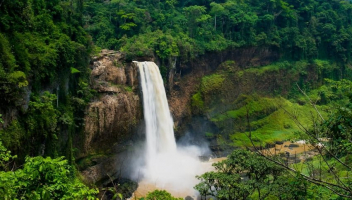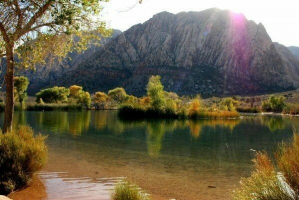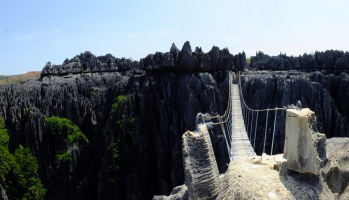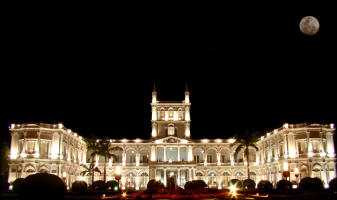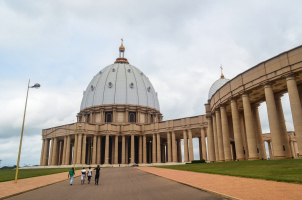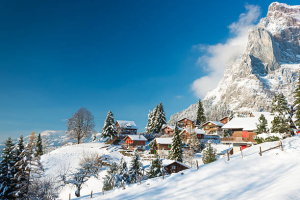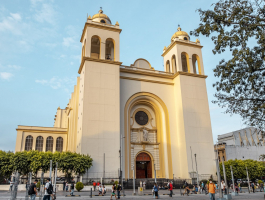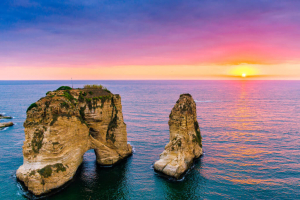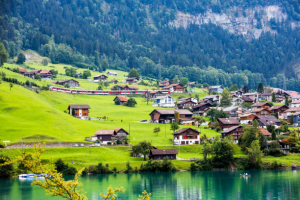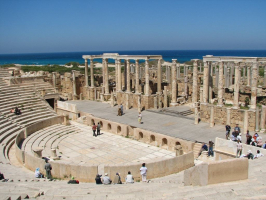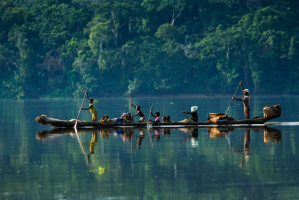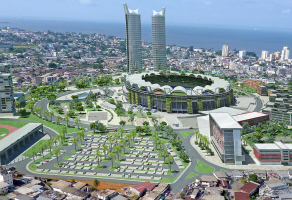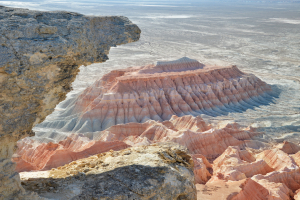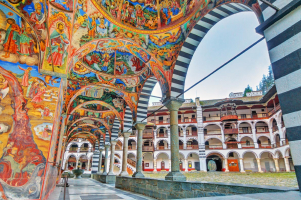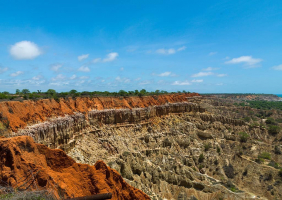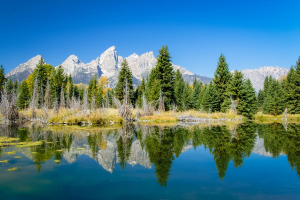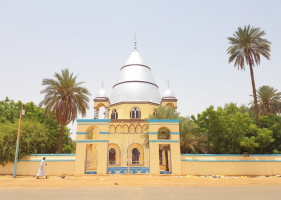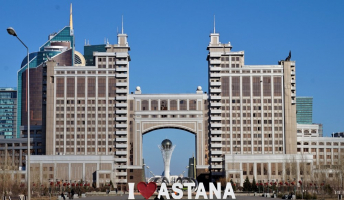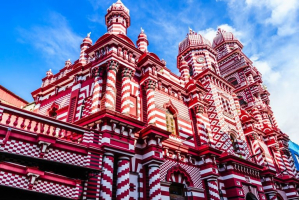Top 10 Places to Visit in Kathmandu
Kathmandu is the core of Nepal's beauty and the cynosure of the dynamic arena, drawing crowds of tourists from all over the world. From getting to know nature ... read more...to learn about other ethnicities, Kathmandu and its surrounding areas provide the ideal setting. Typically, Kathmandu conjures up images of climbing to the world's highest peak, Mount Everest, and strolling through the forests, both of which require a lot of time and energy. For those of you who are not dedicated trekkers and do not have much time to devote to trekking, there are considerably more possibilities within easy reach of Kathmandu. Let's have a look at the list of various places to visit in Kathmandu that are worth exploring.
-
Pashupatinath is the most important Hindu holy shrine in Nepal. Among the Lord Shiva locations, this sacred shrine is the most important. Pashupatinath temple is around 5 kilometers northeast of Kathmandu valley on the bank of the Bagmati River. Bagmati is regarded as a holy river by religious people, who wash their hands and feet before entering the temple to worship. The Pashupatinath temple's enclosed area is on the UNESCO World Heritage list.
Every year, thousands of devotees, ordinary people, and tourists from all over the world visit the pilgrimage site to worship, do research, or learn about the temple's magnificence and construction. Previously, only Hindus were permitted to enter the temple and pray, while others were only permitted to view the Pashupatinath temple from the Bagmati River's bank. However, recent events have transformed people's beliefs, opening the entrance to the temple to every human being.
The Pashupatinath temple is built in the Pagoda style. The wooden windows, doors, gates, and accessories are all wonderfully constructed, illustrating the historical framework that has been followed for centuries. The copper roofing of the temple's two levels are covered with gold. The four entry doors to the temple are constructed of silver sheets. The temple's tower is composed of gold, which represents the religious concept. The western entryway features a large bronze figure of Bull / Nandi. The bull is the ultimate Lord Shiva cavalier emblem.
The Shiva Linga, or deity inside the temple is made of black stone and is 6 feet tall and has the same circumference. The temple preserves the important traditions, values, and basic beliefs of Nepalese people who have long practiced Hinduism. Visiting Pashupatinath is an excellent way to learn about Nepalese heritage, culture, and religion.- Google Rating: 4.8/5
- Website: https://pashupatinathtemple.org/
- Phone: +977 1-4471828
- Opening Hours: Daily - 5:00 to 14:00 & 17:00 to 18:00
- Address: Gaushala Road, Kathmandu 44600, Nepal
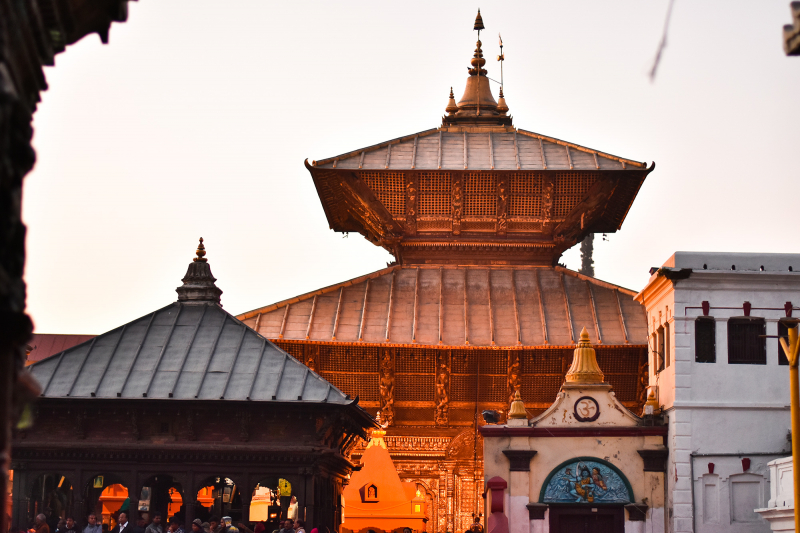
onlinekhabar.com 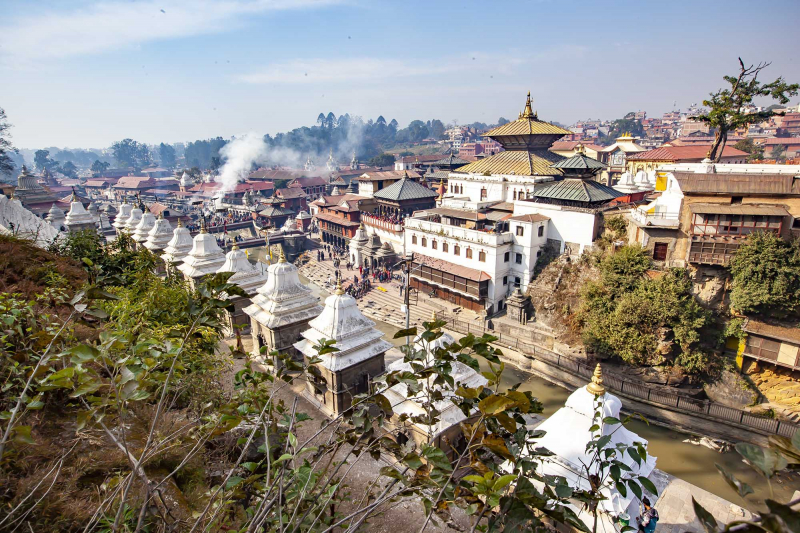
hinduismtoday.com -
Boudhanath, commonly known as Boudha, is a stupa located in Kathmandu, Nepal. The relics and bones of Buddha are housed in the semicircle-shaped Boudha stupa. The stupa's huge mandala makes it one of the world's largest spherical stupas. UNESCO inscribed the Boudha Stupa on the World Heritage List in 1979, and it is one of Kathmandu's most prominent tourist attractions.
The giant Boudhanath stupa is a gateway to heaven serving as a horizon between the earth and the sky. The base of the stupa structure consists of three large platforms decreasing in size. These platforms symbolize the sky, whereas the circular vase supporting the semi-sphere signifies water. The eyes of Buddha painted on the stupa are diversely described as inscrutable, impassive, empathetic and shrewd. The five most promising elements representing Buddha i.e. earth, air, water, fire and space are comprised in the Stupa architecture.
Boudha is an awe-inspiring and spiritual area, as well as one of the holiest Buddhist pilgrimage destinations in Kathmandu. Monks pray and sing songs on the full moon day, and all Buddhists visit the site as part of their sacred visit. As a daily practice, many people walk three or more times around the stupa while repeating the mantra 'Om Mani Padme Hum' in a "kora". Prayer flags fastened to the stupa flap in the wind, carrying mantras and prayers to the heavens.
Surrounding Boudhanath Stupa are streets and narrow alleys lined with colorful homes, Tibetan Buddhist monasteries and street vendors. Around the stupa, there are several restaurants, coffee shops, cafés, guest rooms, Tibetan art and craft businesses, Buddha statue shops, and so on. Tibetan dishes such as laphing, thukpa, alu roti, khapse, and others may be obtained inside the confines of the Boudha Stupa and are popular among the inhabitants.
- Google Rating: 4.7/5
- Phone: +977 986-8863886
- Opening Hours: Daily
- Address: Buddha Stupa, Boudha Sadak, Kathmandu 44600, Nepal
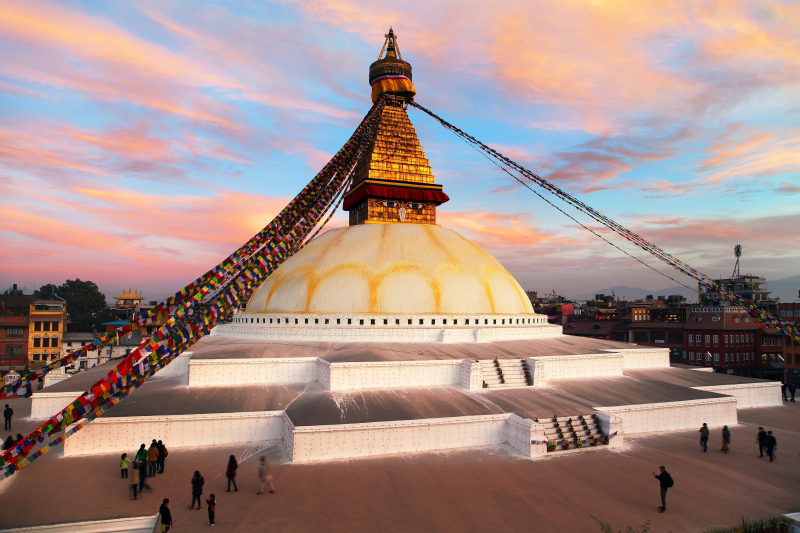
arrivalguides.com 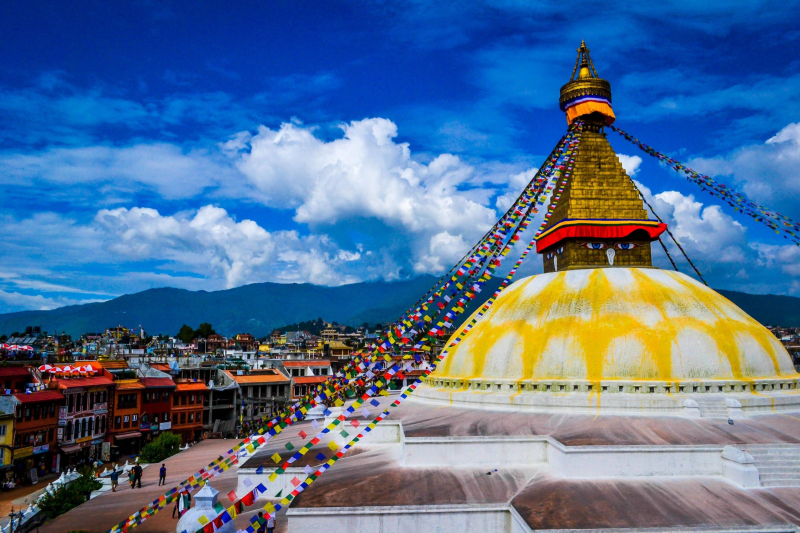
ktmguide.com -
The Langtang National Park, which has trekking paths, beautiful foliage, and a diversity of flora and fauna species, was established in 1976 as Nepal's fourth national park. The park is situated at an approximate distance of 32 kilometers to the north of the capital city of Kathmandu and is linked to the Qomolangma National Nature Preserve in Tibet.
The tranquil, high altitude Gosaikunda Lake, which is thought to be sacred, is also located in the gorgeous park. From the dense forests which comprise the hilly areas, the area of the park spreads across the Nepalese larch in the middle before cascading down to the vast meadows of green grasslands. With over 250 bird species, 46 animal species, and over 1000 plant species, this location is great for nature aficionados.
The park contains 26 Village Executives and is spread across an area of 1710 square kilometers in the Rasuwa, Nuwakot, and Sindhupalchok districts. It is positioned at an altitudinal range of 6450 meters above sea level. The park's apex is the massive Langtang Lirung, which stands at 7245 meters above sea level. The various trekking trails, each with a different level of difficulty, serve to people who come here in search of adventure. While Tibet's international boundary corresponds with the park's boundaries in the north and east, the park's western border follows the rushing rivers Trisuli and Bhote Kosi.
- Google Rating: 4.6/5
- Phone: +977 10-540219
- Opening Hours: Daily
- Address: Helambu, 45007, Nepal
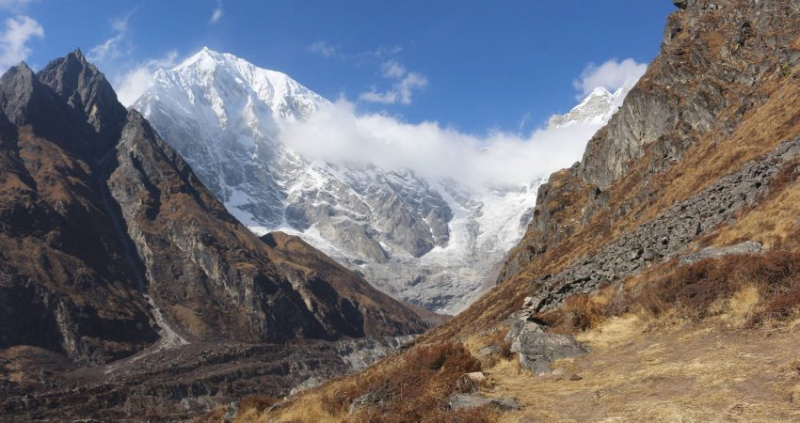
nepalguideinfo.com 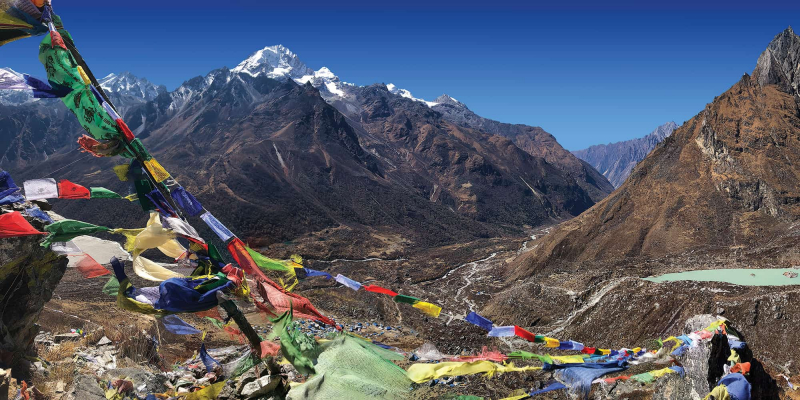
greathimalayatrail.com -
Swayambhunath Stupa is one of the most important and oldest Buddhist World Heritage Sites in Nepal, consisting of a stupa and many shrines and temples dating back over 1,500 years. Because of the numerous monkeys that reside here, Swayambhunath is also known as Monkey Temple. Although they may appear charming and friendly, be wary of these monkeys because they have been known to assault and steal from people.
The Swayambhunath Stupa is located on a towering hill in the Kathmandu Valley, about 15 minutes west of downtown Kathmandu. As a result, there are hundreds of stairs to climb to reach the stupa, which are not difficult, but if you have physical constraints, plan your visit appropriately. However, as you see the spectacular panoramic views of the city as well as the gorgeous religious sites, you will realize it was well worth the hike. Visitors may witness a panoramic view of the Kathmandu valley from the top of the hill, as well as playful monkeys swinging from trees and prayer flags hung around the colorful temple.
You may see Swayambhunath Stupa as part of a UNESCO World Heritage Site Tour that includes four of Kathmandu's most important sites: Swyambhunath Stupa, Bouddhanath Stupa, Pashupathinath Temple, and Kathmandu Durbar Square. On this trip, you will learn about the local history and culture while admiring the breathtaking views from Swayambhunath Stupa.
- Google Rating: 4.6/5
- Website: https://swoyambhustupa.com/
- Phone: +977 1-4218801
- Opening Hours: Daily - 7:00 to 22:00
- Address: Swayambhu, Kathmandu 44620, Nepal
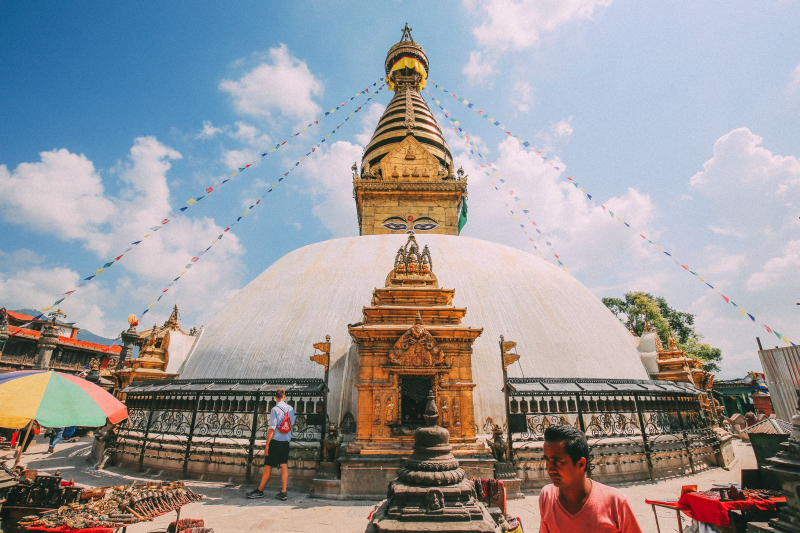
handluggageonly.co.uk 
lonelyplanet.com -
Kathmandu Durbar Square has seen and received one king after another as they sat and reigned over Nepal a long time ago, where new kings were crowned as the constant sounds of drums and trumpets filled the place. To this day, it is the most impressive relic of Kathmandu's ancient architecture. Even if the dreadful earthquake of 2015 took its toll on the structure, and some areas inside the premises fell, it has kept its former splendor.
While the open Basantapur Square area is located in the complex's southern portion, the main Durbar Square area is located in the complex's western portion. For long years, the former was a stable for royal elephants. Today, it is a tourist attraction with souvenir shops. The second section of the square goes through the complex's northeast corner. The entrance to the magnificent Hanuman Dhoka Complex is built here, with a lovely collection of temples snuggled behind it. The location is an active walkway that links many streets for the general public.
Even though the Durbar is no longer used for coronations, it is a popular destination for visitors during festivals such as Dashain, Indra Jatra, Machhindranath Jatra, and Gaijatra. UNESCO designated the whole Durbar Square complex as a World Heritage Site in 1979.
- Google Rating: 4.5/5
- Phone: +977 1-4268969
- Opening Hours: Daily - 9:00 to 17:00
- Address: दीघा पहलेजा, J P Marg, Kathmandu 44600, Nepal
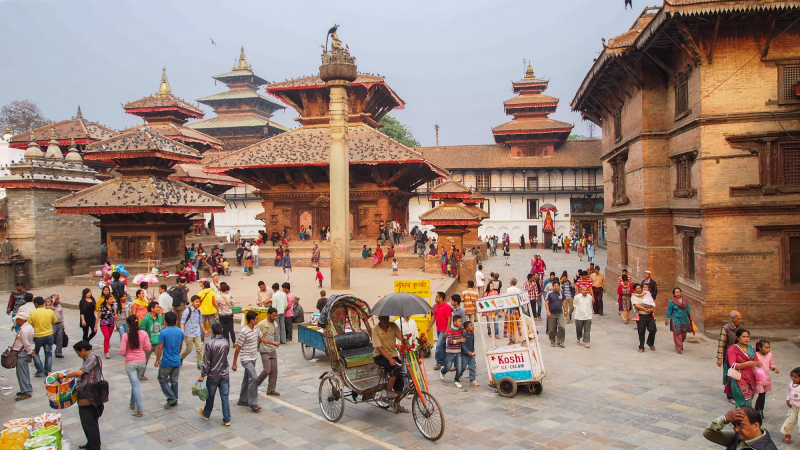
locationscout.net 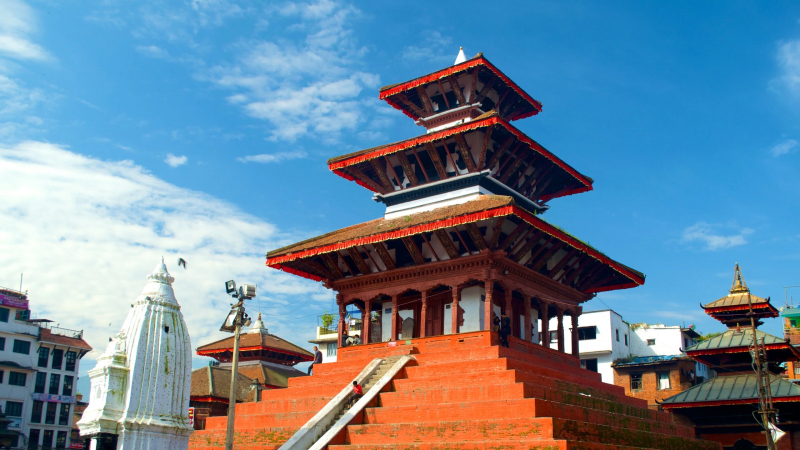
locationscout.com - Google Rating: 4.5/5
-
Narayanhiti Palace Museum's interior design is in the Late Victorian style. There are 52 rooms in total throughout the three sections. Nepal had 75 districts back then, and all the rooms, called Sadan, were named after the 75 districts. The major doors are named after Nepalese mountains, while the entrance door is named after Gauri Shankar Mountain. There are additional doors called Sagarmatha (Mount Everest), Mount Annapurna, Ganesh Himal, and others.
The foyer, Kaski Sadan, features an outstanding display of two Bengal tigers hunted by King Mahendra and King Birendra. This hall hosted formal government events as well as swearing ceremonies for Prime Ministers and leaders of constitutional bodies for the Kingdom of Nepal.
The Gorkha Bhaithak, the position of authority room, stands directly above the Kaski Baithak. Built in a Hindu Temple architecture, this Sadan has 48 feet Chandelier hanging on a 60 feet high Pagoda style ceiling with four concrete columns around representing Naga. The Throne of the Kingdom of Nepal is housed beneath the lofty roof. On important occasions, the royals delivered the proclamation in this noble parlor. Besidies, the relics of the Nepalese Royal Massacre, which occurred on June 1, 2001, may still be seen on the palace grounds. Many tourists come here to see the bullet marks that hit members of the Royal Family.
- Google Rating: 4.4/5
- Website: http://narayanhitipalacemuseum.gov.np/
- Phone: +977 1-4227844
- Opening Hours: Mon & Thu to Sun - 10:00 to 16:00
- Address: P87C+V23, Narayanhiti Path, Kathmandu 44600, Nepal
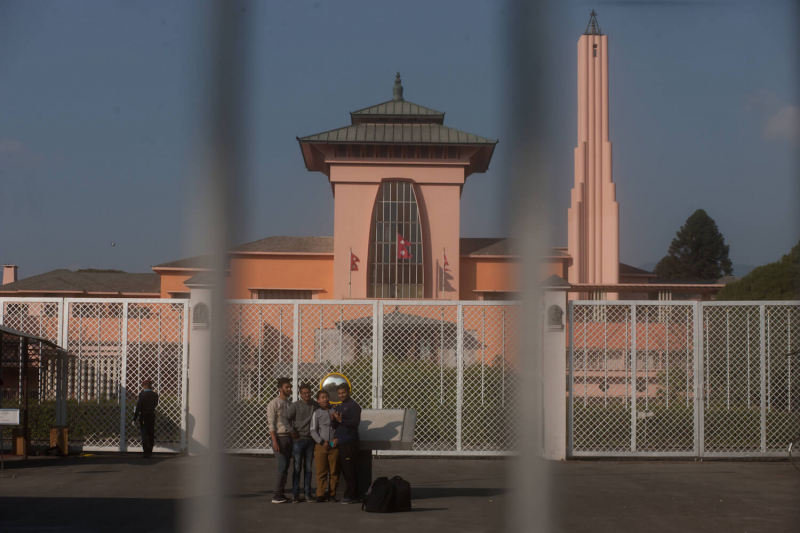
nepalitimes.com 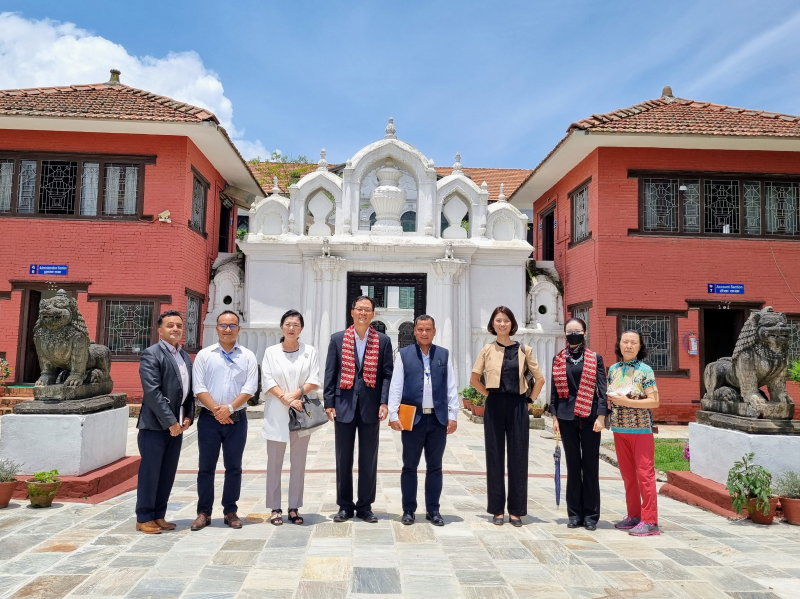
overseas.mofa.go.kr -
Siddhartha Art Gallery, which houses a diverse spectrum of modern Nepali art, was founded with the goal of giving a platform for national artists to show their works. For the past two decades, the gallery has worked tirelessly to promote contemporary art in Nepal and to act as a catalyst for change in order to assist artists. They also provide services for art investors by evaluating and restoring artifacts. It is the ideal location for art enthusiasts and anyone interested in learning about and comprehending the progression of Nepalese art.
Over the last twenty-four years, the Gallery has organized more than 315 exhibitions. Retrospective exhibits by the late Amar Chitrakar, Karna Narsingh Rana, Shashikala Tiwari, Ragini Upadhya-Grela, Uttam Nepali, and Shashi Shah have been landmark events.
The Siddhartha launched ''Celebrating Line,'' the capital's first drawing exhibition, as well as a dramatic anti-conflict show by prominent Pokhara artist Durga Baral and an exhibition by celebrated Bombay-based artist Laxman Shreshta.
In addition, the Gallery has staged exhibits by Nepali artists in London, India, and Pakistan. In addition, the Siddhartha Art Gallery has hosted exhibits by emerging artists, photographic exhibitions, ceramics and printmaking workshops, and slideshows and talks by visiting artists. The Gallery has also included installation art and new media experimentation.
- Google Rating: 4.4/5
- Website: https://www.siddharthaartgallery.com/
- Phone: +977 1-4218048
- Opening Hours: Sun to Fri - 11:00 to 17:00, Sat - 12:00 to 17:00
- Address: M8VF+Q3P, Babermahal Revisited premises, Tanka Prasad Ghumti Sadak, Kathmandu 44617, Nepal

kathmandutriennale.org 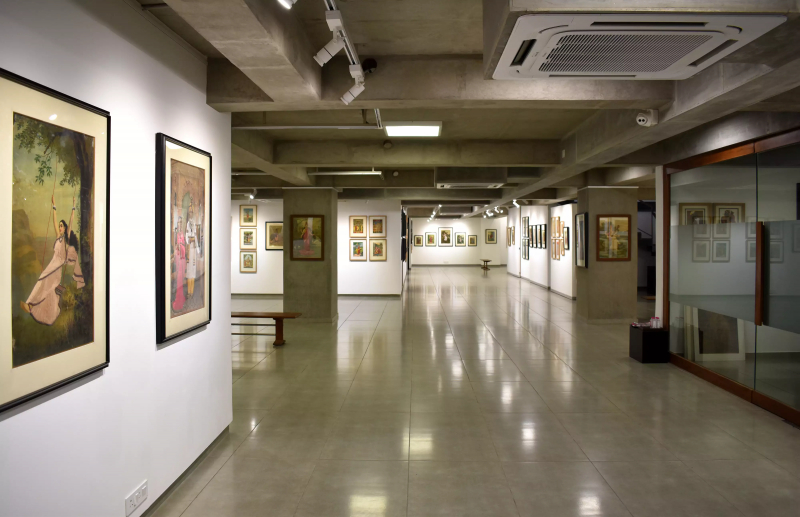
timesofindia.indiatimes.com -
Situated amidst the Kathmandu valley, Garden of Dreams in Kathmandu is a classical garden of Nepal. This complicated garden construction in the middle of Kathmandu is a favorite destination for children and tourists since it has a very attractive ambience and sitting arrangements with a natural girdle.
The area encompasses verandas, pavilions, an amphitheater, ponds, pergolas, and gardens. The nicely constructed garden has one of the most calm and excellent ambiances with remarkable beauty. The lavish embellishments of the Garden of Dreams on its premises are breathtaking. The fountains and ponds, inscriptions, and pavilions are worth some pleasant moments in its venue.
There is a Kaiser Cafe, operated by Dwarika’s group. You could spend some quality time with coffee and, of course, literature. The floral beauty of the garden and its impressive atmosphere is something you want to indulge in. You can even take some adorable and wonderful photos there. The ambiance and the support you will get from the management will make your time more lucrative. If you need modeling photographic space quickly, the Garden of Dreams offers it all. With the historic charm of the garden and pavilions, you will have a really lovely location for photography.
- Google Rating: 4.2/5
- Website: https://gardenofdreams.org.np/
- Phone: +977 1-4525340
- Opening Hours: Daily - 9:00 to 18:30
- Address: P877+MR2, Tridevi Sadak, Kathmandu 44600, Nepal
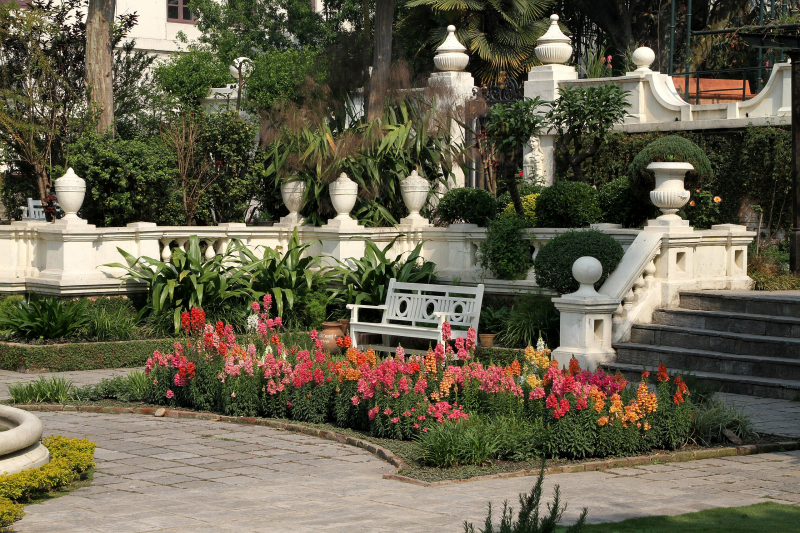
thirdeyetraveller.com 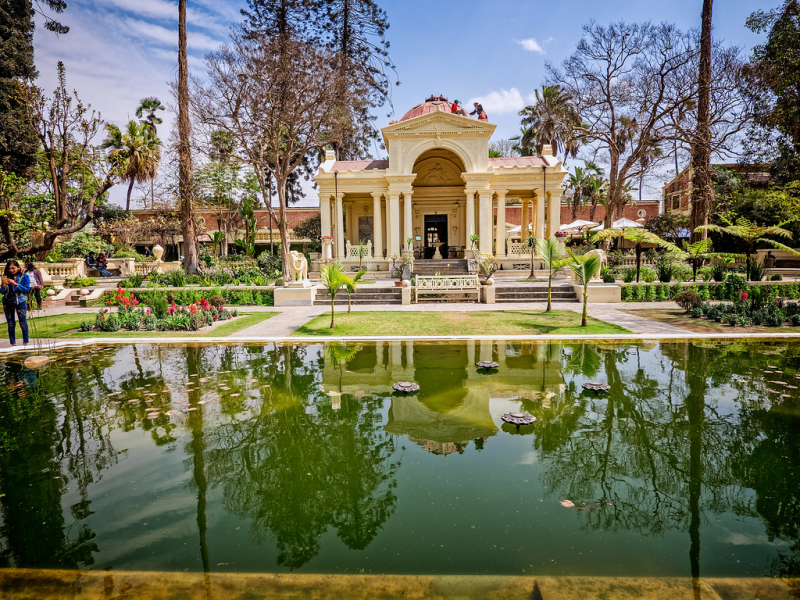
thirdeyetraveller.com -
The Kaiser Library, also known as the Keshar Library, is located in Kathmandu's Kaiser Mahal and has over 45,000 books from Field Marshal Kaiser Shumsher Rana's personal collection. It was founded in 1969 and includes a vast selection of publications on themes such as history, law, art, religion, philosophy, and so on. It was a popular tourist destination, but after an earthquake struck Nepal in 2015, the library was severely damaged. Although the bottom floor has been renovated and accessible to the public, much of the beauty of the building has been lost. Visitors can still go to see the collection of rescued and repaired books and artifacts.
The Kaiser Library used to have beautiful hardwood furniture and antique furnishings, as well as mirrors, portraits, statues, taxidermied animals, and weaponry on exhibit. It has two levels with large windows that gave in plenty of light and air. The seating was carefully thought out, with dark wood tables and chairs, and all the volumes were neatly packed in wooden racks. Today, only the ground floor remains, with the salvaged collection placed haphazardly.
There is relatively limited place for readers to sit and read one of the works of literature, but visitors can borrow books from the library. Some of the retrieved books are rare, first editions, and over a thousand years old. Outside the library is an attractive garden with fountains, verandas, pavilions, a lotus pool, and birdhouses reminiscent of the Edwardian Gardens.
- Google Rating: 4.1/5
- Website: https://klib.gov.np/
- Phone: +977 1-4411318
- Opening Hours: Sun to Thu - 10:00 to 17:00, Fri - 10:00 to 15:00
- Address: P877+WR4, Kanti Path, Kathmandu 44600, Nepal
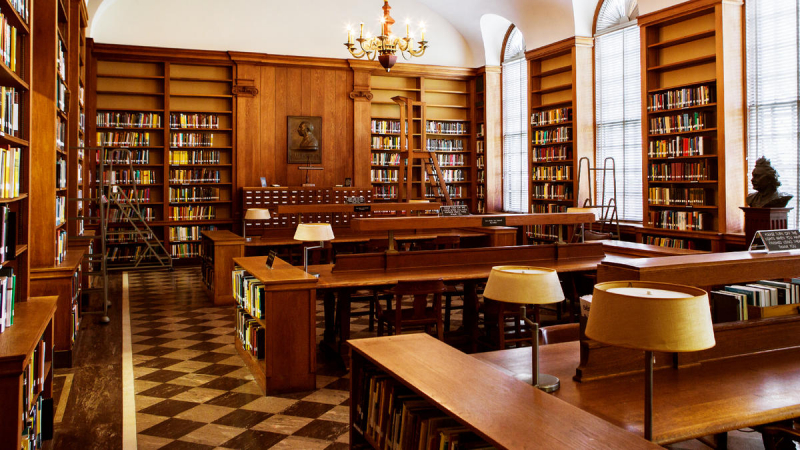
nepaleseteacher.com 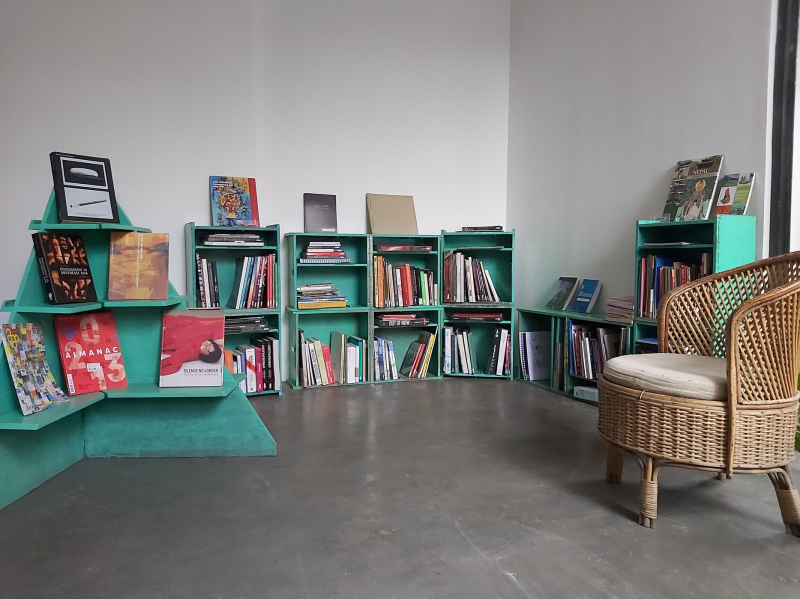
kensalriselibrary.org -
Asan Tole is one of the most well-known historical sites in Kathmandu because of bustling market, festivals, and strategic position. There are six roads intersecting at this Asan Tole main point. It is a diagonal route that runs from the Kathmandu Durbar Square across the city, cutting through the conventional north-south, east-west oriented streets.
If you enjoy taking pictures, you might easily spend an entire day strolling about Asan Tole, wandering and discovering things to do. Even nowadays, you can observe a slew of traditional tiny stores in typical Newari-style terraced houses that serve as the front doors of a slew of passageways, court-yards, and shrines occupied by a family group along this street.
Here at this Asan Tole, you may discover traders, businesspeople, consumers, tourists, and craftspeople in what at first appears to be an unorganized and confused distribution of buildings. While strolling through these neighborhoods, keep a look out for a religious celebration, a wedding, or just someone paying tribute to his personal god with colorful flower gifts, sweetmeats, and incense or butter lamps. Asan Tole is packed with vegetable and spice sellers offering everything a household needs. This is the primary location for kitchen purchasing since you can purchase anything you need for your kitchen. Every day, local farmers' products from all around the Kathmandu valley are transported to this renowned marketplace to be sold. Banks, restaurants, and a post office are all available.
- Google Rating: 4.1/5
- Phone: +977 1-4218801
- Opening Hours: Daily - 6:00 to 21:00
- Address: Chittadhar Marg, Kathmandu 44600, Nepal
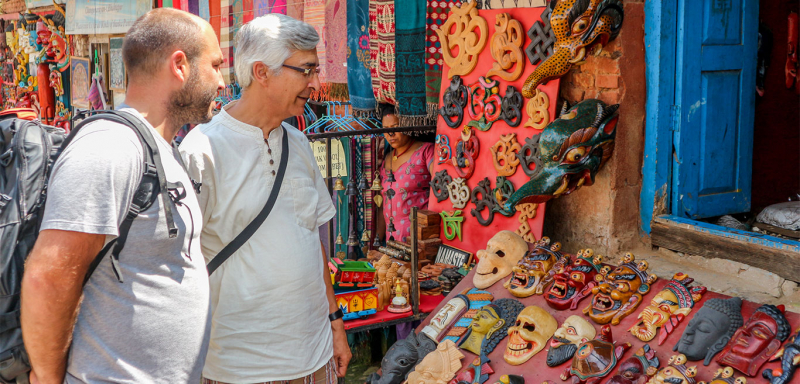
mailebujena.com 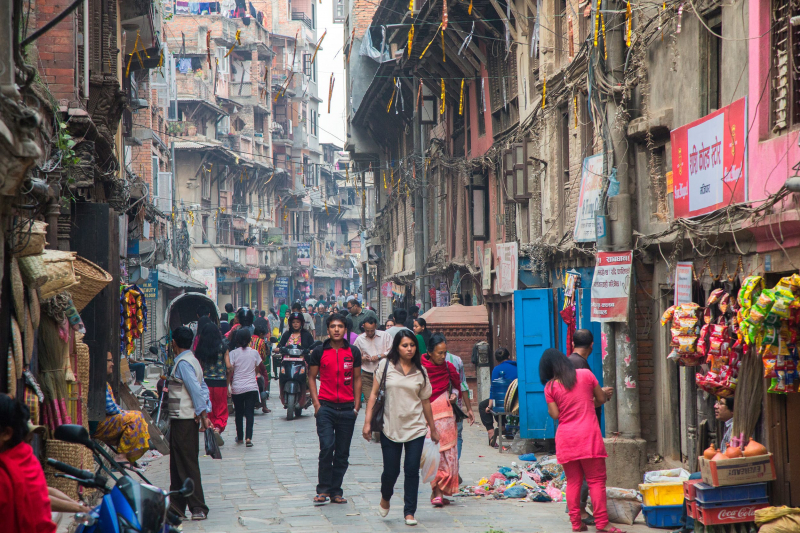
lonelyplanet.com












